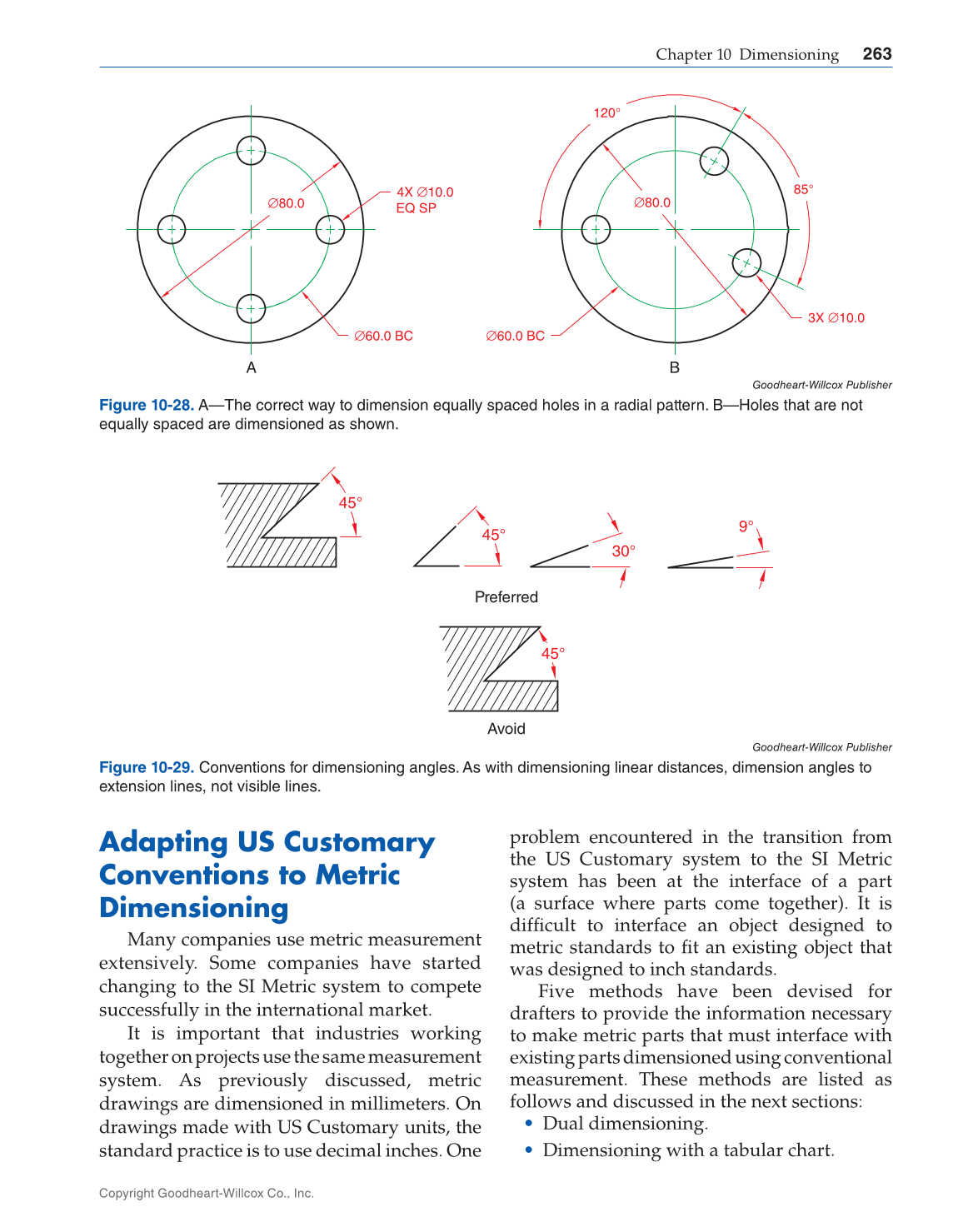Chapter 10 Dimensioning
263
problem encountered in the transition from
the US Customary system to the SI Metric
system has been at the interface of a part
(a surface where parts come together). It is
diffi cult to interface an object designed to
metric standards to fi t an existing object that
was designed to inch standards.
Five methods have been devised for
drafters to provide the information necessary
to make metric parts that must interface with
existing parts dimensioned using conventional
measurement. These methods are listed as
follows and discussed in the next sections:
• Dual dimensioning.
• Dimensioning with a tabular chart.
Adapting US Customary
Conventions to Metric
Dimensioning
Many companies use metric measurement
extensively. Some companies have started
changing to the SI Metric system to compete
successfully in the international market.
It is important that industries working
together on projects use the same measurement
system. As previously discussed, metric
drawings are dimensioned in millimeters. On
drawings made with US Customary units, the
standard practice is to use decimal inches. One
∅80.0
∅60.0 BC
4X ∅10.0
EQ SP
120°
85°
∅80.0
3X ∅10.0
∅60.0 BC
A B
Goodheart-Willcox Publisher
Figure 10-28. A—The correct way to dimension equally spaced holes in a radial pattern. B—Holes that are not
equally spaced are dimensioned as shown.
45°
45°
30°
9°
45°
Avoid
Preferred
Goodheart-Willcox Publisher
Figure 10-29. Conventions for dimensioning angles. As with dimensioning linear distances, dimension angles to
extension lines, not visible lines.
Copyright Goodheart-Willcox Co., Inc.
